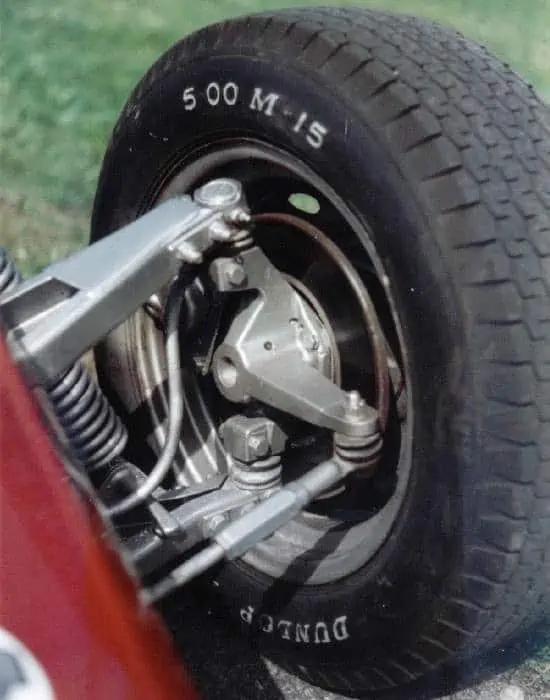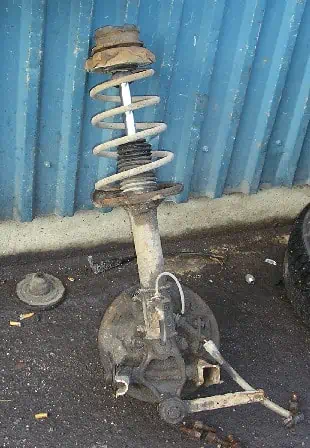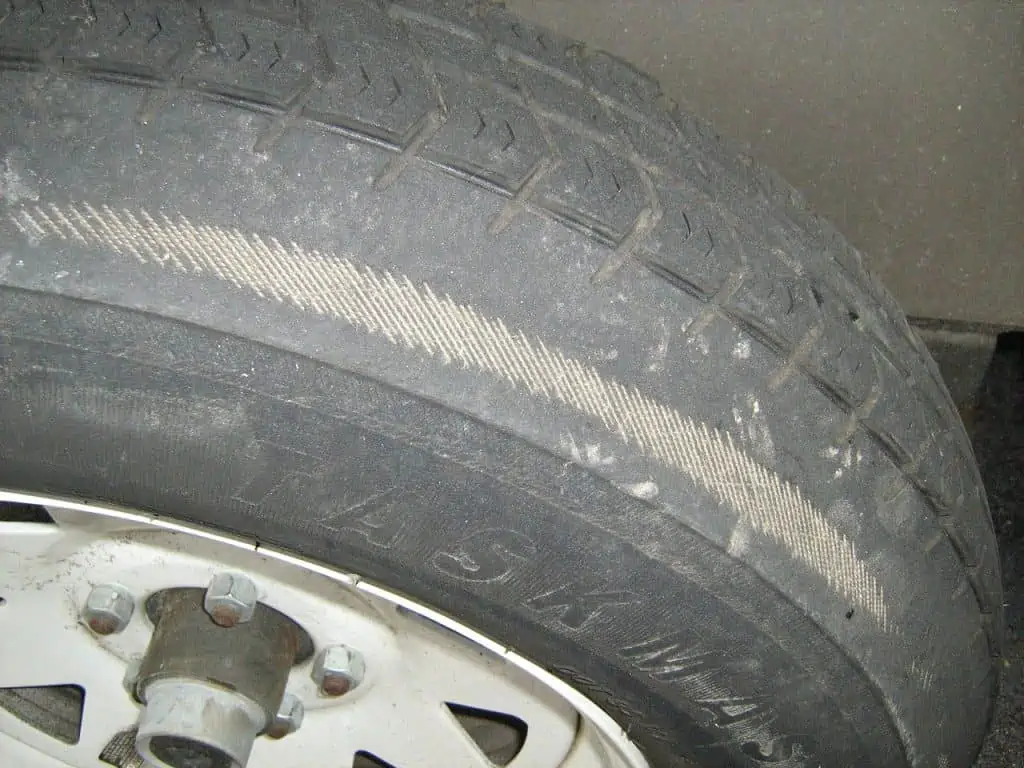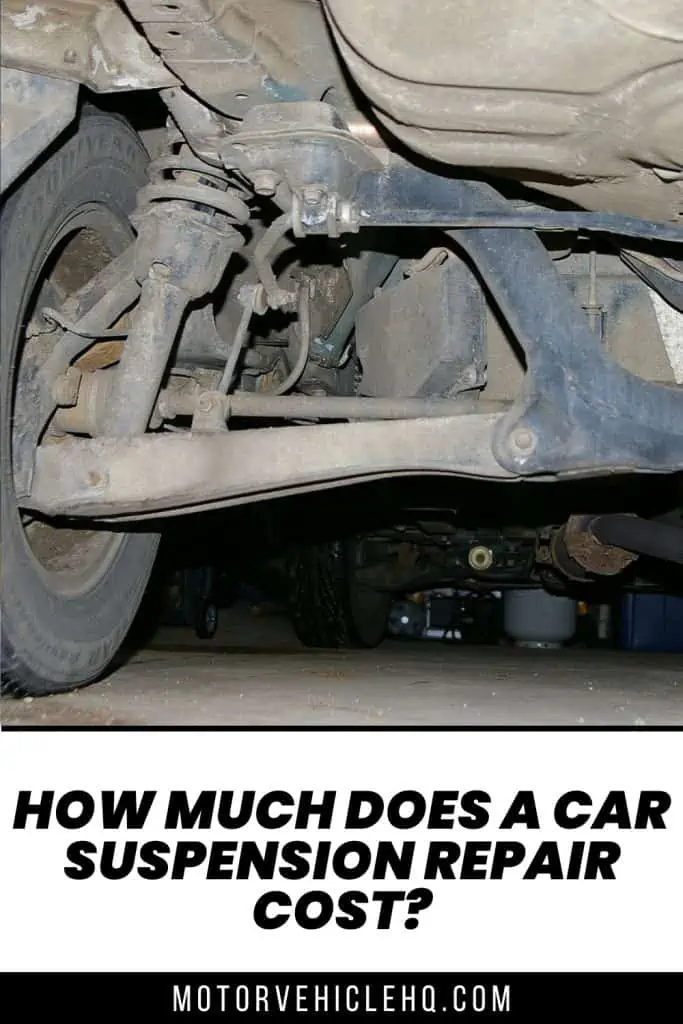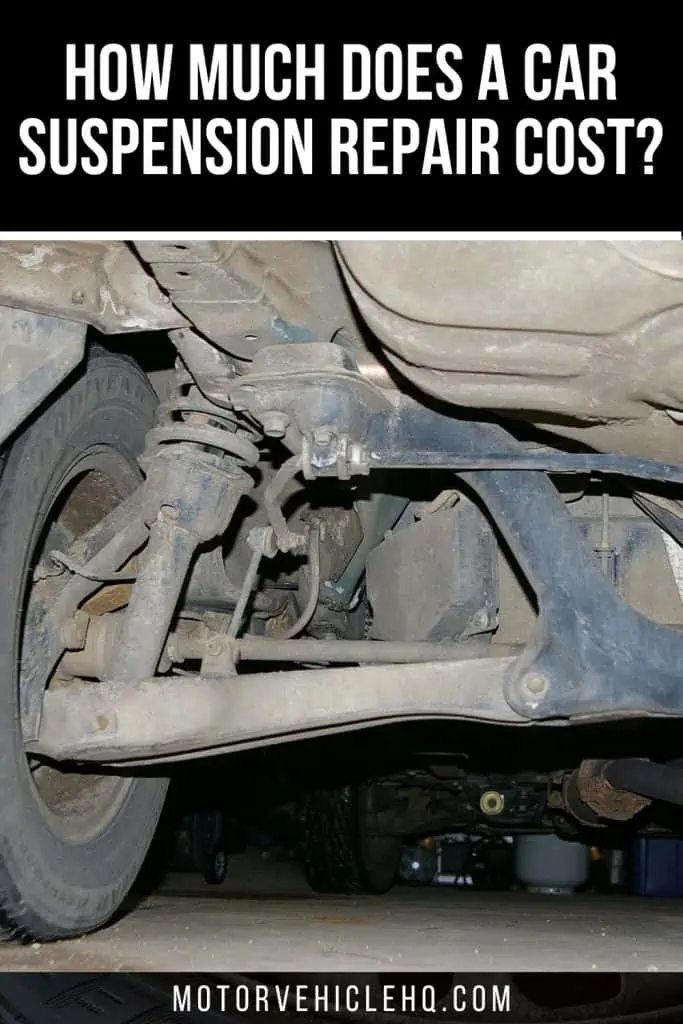It’s not a novel concept to travel on top of a soft, springy vehicle. Suspension is a concept that predates the vehicle. They valued being able to ride on top of their leaf-spring-equipped chariots smoothly even in the early days of ancient Egypt.
But every time your automobile is taken to a workshop, the suspension is one of those things we tick off the list without giving it any thought. Therefore, the phrase suspension repair cost doesn’t frequently cross people’s minds.
You’ll need to take a seat for this one when it does, though. Even though it can appear straightforward at first glance, the suspension is one of the most expensive repairs you’ll ever need to plan out a fix for.
God forbid, you drive a more recent vehicle with air suspension or actively regulated dampers. Additionally, a set of car springs do much more than only protect your buttocks from potholes.
However, you shouldn’t give up hope just yet. The suspension repair cost need not be equivalent to a mortgage, even though it can be quite expensive when things go wrong. The suspension system in your car is a fairly intricate one with numerous elements. Each must play a part in your suspension to be successful.
If you’re lucky, it might only be one of those components that requires repair. What should I do now, and how much will the suspension repair cost be? To find out more, follow our instructions as you read.
Overview of a Vehicle’s Suspension
We must understand suspension better to explain it. The suspension of your car is a tremendously complex component made up of numerous unique pieces that all operate together.
The main information on the more significant – and frequently repaired – parts will be found further down in our guide on suspension repair cost. For the time being, we can claim that a car’s suspension wouldn’t be able to function adequately even if just one of them failed.
Rear independent suspension by Hustvedt / CC BY-SA 3.0. Even if just one component of the car’s suspension system failed, the suspension of an automobile can not operate as intended.
In conclusion, a car’s suspension joins the body or frame to the wheels of the vehicle. As a result, it enables efficient transfer of both motion and energy between them. The suspension serves two primary purposes. The ability to sustain road handling is the first requirement.
In other words, the suspension must ensure that the car can “stick” or maintain traction on the road to the greatest extent possible. The suspension’s tension will work hard to maintain the contact patch between your tires and the ground.
The result is that the car can move and maintain good handling in addition to being able to transfer kinetic energy. Second, by reducing any pain, the suspension of your car will guarantee a smooth ride.
Without suspension, you would be able to feel even the smallest cracks, bumps, or pebbles as you drove over them. Furthermore, avoiding excessive jolting or bouncing would guard against dislodging or harming your car’s numerous working elements.
A Car Suspension: What Is It?
Therefore, there are many very significant obligations associated with your suspension. Because of this, various suspension components, including shocks, struts, and springs, have been made to have a lengthy lifespan.
Shocks and struts, on the other hand, can last up to 10 years if you consistently drive on flat, even surfaces. However, if you’re like most people, your suspension will probably need to be repaired or replaced far before the 10-year milestone.
While you’re driving, your suspension is continuously exposed to the weather because it is located under the undercarriage of your automobile. Your car’s suspension will have to worry about smoothing out every speed bump and pothole on the road in addition to being hit by various objects. The majority of producers advise owners to get their suspensions inspected every 40,000 to 60,000 miles.
The spring is the main part of a car’s suspension. The springs are responsible for positioning the wheels and determining the ride height of an automobile. But a car’s suspension consists of much more than mere springs.
Here are some of the more prevalent and pricey suspension repair cost parts that you should be concerned about:
1. The Struts and the Shocks Absorbers
They both contribute to the cushioning of your car and serve comparable purposes. As their name implies, they tame any “shock” that your car may experience, such as hitting a pothole.
Struts are different since they are a structural part of your car. In any case, fluids are added to shock absorbers, struts, and cylindrical tubes to maintain a predetermined hydraulic pressure. All of the impacts are softened by those hydraulics.
The hydraulic fluids seeping from shocks or struts are the most frequent problem. This may occur as cracks begin to show up or if the seals become worn down from repeated use and abuse.
Your automobile will no longer be adequately cushioned against road imperfections if your shock absorbers begin to leak. This will eventually cause other stressed suspension components of your car to prematurely wear out.
2. The Ball Joints and the Control Arms
Control arms are hinged links that attach the wheels of your car’s suspension system to the chassis. Then, using a set of ball joints that also aid in smooth steering, they are connected to the steering system. The suspension of your car has several major stress points, including control arms and ball joints. This implies that they experience a great deal of stress.
Part of the car’s front suspension by Hohum. The suspension of a car connects the body or frame to the wheels. It consequently makes it possible for them to efficiently transfer both motion and energy.
As a result, compared to most other suspension components on your car, the control arms and ball joints need to be replaced more frequently. Bushings for control arms can also get worn or brittle over time. Because the power and steering must both travel through to the front wheels, this is a more common issue with front-engine vehicles. In the meantime, ball joints will eventually stop working.
3. The Suspension Bushings
This additional component of your car ensures that the suspension can function properly with one another. As padding or insulators, bushings are frequently employed between the parts of your car’s suspension. The suspension bushings primarily work to reduce excess vibration, noise, and friction.
Nevertheless, its primary function is to prevent the metal components of your suspension from rubbing against one another. Suspension bushings can wear down over time and break or tear through. When this occurs, the metal suspension components on your car may begin to scrape against one another. This will significantly speed up the rate of deterioration of your complete suspension system as a whole.
4. The Sway Bar and the Sway Bar Bushings
The frame of your car will be put under a lot of stress as a result of driving along uneven road conditions. Sometimes, the tension may be distributed unevenly. When this occurs, certain structural components of your car experience greater pressure than others.
This is bad because you probably want to keep your car in excellent condition. Consider attempting to warp a toy automobile using only your hands. In contrast, your car might pick up too much information from one side or the other.
This is balanced by the sway bar of the suspension. The primary purpose of the sway bar is to uniformly distribute forces throughout your car. If your car is leaning too far in one direction, it will also mean that force is applied to the opposing ends of the vehicle.
The sway bar, for instance, will reduce stress if all but one wheel is still on the road but one wheel has slid into a large pothole. The sway bars’ bushings will eventually become worn out.
What are the Symptoms of a Bad Suspension?
We’ve now learned how crucial it is for your car’s suspension to function properly, possibly even more so than most people would think. So how can you tell if something is wrong?
How can you tell whether your car’s suspension needs to be checked? Fortunately, there are a few extremely obvious warning indications that your car’s suspension is about to fail. Here are a few of the most typical instances from our guide on suspension repair cost.
1. Body Roll Is Very High When Turning
To indicate how much your car leans while turning, use the word “body roll.” A simple way to describe excessive body roll is the sensation that your car is about to topple over and roll onto its side. Your car may be experiencing suspension issues if you notice this unnerving swaying to the left or right.
If you were driving a taller vehicle, such as an SUV, it might topple over when turning hard at a steep incline. It should go without saying that this can make driving any car risky.
If your automobile is parked on a flat surface, you can at least see that it is leaning to one side. One side of your car may be lower than the other. Problems with body roll and lean are frequently attributed to rusted shocks, struts, or springs.
If this is true, there is a good technique to verify it. Take a look at your car’s suspension by squatting down. You’ve just discovered a leak if you notice that your car’s shocks or struts are greasy or oily.
The most prevalent suspension issue is hydraulic fluid seeping from shocks. This might happen as cracks start to appear or if the seals start to wear down from constant use and misuse.
2. A Very Weird Bouncy Ride
Even when you’re driving on the roughest terrain imaginable, a decent suspension should always keep your automobile steady and collected. As a result, you shouldn’t experience any similarity to a mobile bounce house.
Another indication of suspension breakdown is if your car bounces excessively every time you drive over a pothole or a relatively tiny speed hump. Unless your car was made specifically to be a low-rider.
You can be bouncing forward and backward in addition to up and down. As you press the brake pedal, your automobile may feel as though it is plunging or diving nose-first. On the other hand, when accelerating, you can feel your car stooping heavily.
Once more, worn-out shocks, struts, or suspension springs themselves are frequently to blame. Similar to the previous symptom, this could mean that significant suspension repair cost is impending.
You can perform a fast “bounce test” to verify this for yourself. Go to the front of your car and press down with your entire body weight on the hood while it is securely in “Park.” After releasing, count the number of bounces your car makes.
By pressing down on the trunk, you may then go back and repeat this process on the back of your automobile. You have a worn suspension if your automobile bounces more than two or three times after you release the brake.
3. Existence of Unusual Noises When Driving?
The suspension of your automobile shouldn’t be making any noise at all, let alone like an old mattress. Another obvious indication of suspension damage would be any squeaking, knocking, or clunking sounds. This is particularly audible after driving over bumps or potholes.
Usually, we can isolate this issue as a suspension bushing problem. They may already be worn out and are allowing your suspension parts to rub against one another as a result.
This is the source of the unpleasant sound of metal touching metal. It’s also possible that your control arms or ball joints have failed in the alternative. A sharper, more metallic “clunk” follows this.
4. The Tire Treads Wear Unevenly
As we discovered before in our article on the suspension repair cost, if your car’s suspension is malfunctioning, it will undoubtedly place uneven stress on it. So, other than the tires, where else can you see this the best?
Your car’s suspension will exert greater pressure on one side or set of tires than the other if it is getting close to the end of its useful life. The treads on your car’s tires can then be examined for uneven wear.
Be cautious since uneven wear might not show up all over the tire’s surface. It might simply manifest itself along the interior or exterior walls, for instance. Another obvious sign that your car’s suspension needs to be checked is if one or more of your tires are balder than the rest. Or, if you weren’t able to see this visually, you’ll discover it eventually because you keep needing to change your tires.
5. The Steering Wheel Vibrates
You can naturally start to discover indicators of suspension breakdown through the steering wheel because your car’s suspension is related to the steering system. Pay close attention to the steering feedback you’re receiving as a result.
A strut suspension by Liftarn / CC BY-SA 3.0. The purchase of struts includes a set of four struts, one for each wheel. You can save some money by selecting DIY or remanufactured struts kits, which normally cost between $250 and $350 for a full set.
You could detect a few more vibrations than usual coming from the wheel. Pay attention to how the steering wheel feels in particular when you pass a bump.
This can indicate a deteriorating control arm or ball joint. A worn or damaged suspension can, more significantly, cause your car to slide or pull itself to one side. This is frequently brought on by worn-out shocks in the context of suspension issues. They can no longer keep the equilibrium of your car, therefore this happens. If not, there can be a more serious issue with your car’s steering.
Is It Possible to Drive a Car with a Bad Suspension?
You might instead ask, “Could I continue driving without having to pay any suspension repair cost?’’ Things can’t be that horrible, right? Simply put. If you’ve seen any of the above indications, you shouldn’t be operating a vehicle with a worn-out or problematic suspension. Of course, there are some permissible circumstances, such as when you are aware that your suspension is acting up and that it needs to be sent in for repair.
If so, it might be okay to drive it to the nearby workshop. The workshop is a few miles away. In any other circumstance, just dial a tow truck. It is quite dangerous to drive a car with a malfunctioning suspension, to begin with. You might have trouble steering or your automobile might start to drift to one side.
Additionally, it’s possible that your car won’t be able to keep excellent traction on the road. Therefore, it stands to reason that this is a formula for disaster. In addition to being dangerous, a bad suspension could hasten the wear and tear on the remainder of the suspension.
You don’t necessarily have to pay suspension repair cost for each component just because your car’s suspension is broken. It could just be necessary to replace one or a few parts, such as the shocks or ball joints.
However, if you remain driving for a long enough period, the healthy suspension components of your car will be put under much more stress. By the time everything is said and done, you’ll probably need to repair more of your suspension, if not the whole thing.
When I Bring My Car for an Evaluation of a Suspension Repair Cost, What Will the Mechanic Check?
When deciding if your car requires a suspension replacement or suspension repair, the mechanic will frequently have a checklist of factors that he will consider. He will look for a worn tread or uneven tires. To assess whether the frame is uneven, he will look for unbalanced tires. He will make sure that every bolt and nut is securely fastened.
He could examine the fluid level required for steering. Then, he can look for any worn-out power steering belts. He will look for any potential wheel alignment problems. The shocks will then be examined to see how they are holding up. How much you will pay for your suspension repair cost will be determined by his assessment of the aforementioned factors.
How Much Does a Car Suspension Repair Cost?
So, yes, we do not advise operating a vehicle with subpar suspension. It’s not just uncomfortable; it’s also seriously risky to both your life and your bank account. But you’ve had enough of listening to us chat. I can hear you asking nervously, “How much are suspension repair cost?”
The typical suspension repair cost can be anything between $1,000 and $5,000. Be aware that this price covers the full suspension system before you start to worry.
A typical ball joint by Silverxxx. Ball joint replacement for your car’s suspension normally costs between $400 and $800, though it tends to be closer to the lower end of that range.
This is because many suspension issues call for a total unit replacement. However, you could find that this isn’t always the case. If we look at each component separately, replacing the shocks and struts might range in price from $200 to $1,500.
A set of four shocks and struts, one for each wheel, is included in the purchase. By choosing reconditioned or DIY shocks and struts kits, which typically cost between $250 and $350 for a complete set, you can save some money.
Expect the cost to replace a set of shocks and struts on a more expensive or complex vehicle, such as a sports car or heavy-duty truck, to range between $2,000 and $5,000. A set of four control arms and ball joints can range in price from $350 to more than $2,000 for a complete replacement.
Again, you can find DIY or refurbished kits for less than $400. There are also other expenses to take into account in this situation, such as the price of a correct wheel alignment, which can range from $20 to $400.
What Is the Cost of a New Car Suspension?
We are unable to estimate the suspension repair cost for you specifically and your vehicle. There are simply too many factors to take into account. You can always phone your nearby dealership or repair to ask for a more specific price.
You can also rapidly find quotes online at a ton of different websites, like ClickMechanic, AutoMD, AutoButler, Fixter, YourMechanic, Wrench, RepairPal, WhoCanFixMyCar, AutoGuru, and more.
When calculating suspension repair cost, there are several factors to take into account. Your car’s make and model are an excellent place to start. Luxury or more powerful cars will probably cost more money.
The severity of the harm to your suspension will then need to be determined. The procedure of fixing your car may be significantly more difficult if there is a lot of rust there. As a result, it will take longer to complete a fix and you’ll have to shell out more money for labor.
Fixing suspensions often takes between two and four hours. You’ll then need to learn more about the suspension itself. More sophisticated air suspension is found in newer or more expensive vehicles.
You could lose several thousand dollars for each corner if you had to replace these because they are so pricey! However, you can still be covered by a warranty or insurance to make up for suspension repair. So, if you can, have a look at that choice as well.
What Elements Will Affect the Suspension Repair Cost of My Car?
Your car’s make and model, the extent of the damage to it, the brand of replacement components utilized, the garage and auto mechanic you choose, and other factors will all have an impact on how much you’ll have to spend for a suspension repair.
The amount of money you will spend on your suspension repair cost will be greatly influenced by the make and model. You will pay more for your suspension repair if you drive a luxury car.
You won’t be paying top bucks for your suspension repair if you drive a cheap automobile that has seen a lot in its lifetime. It can take a long time for the mechanic to obtain access and remove the older parts if your automobile is old, has visible rust below, or is lacking in other areas.
Tire showing uneven tread wear by CZmarlin. If your car’s suspension isn’t working properly, it will surely experience uneven stress, which will lead to uneven tire tread degradation.
The harm done to your suspension is the second aspect that affects the price. It is nearly always necessary to replace the parts in pairs when doing a suspension repair. This is done to maintain the alignment.
For instance, replacing both the left and right struts at once would increase the cost of repair and replacement. This procedure maintains the suspension’s stability and balance and stops any older parts from adversely influencing the newly acquired new part.
If you simply balance one side, instability will result, negating the value of the suspension repair. Additionally, a suspension replacement may require you to realign your wheels, which raises the price of suspension repair.
The brand of the parts used in the procedure is the third consideration in calculating the suspension repair cost. Typically, your mechanic will use only one brand of parts during the replacement process.
Before he starts, ask your mechanic what kind of parts he’ll be using, how much the suspension repair cost is expected to be, and how long you may expect to wait. This will put your mind at ease and allow you to confirm that the suspension repair cost is within your spending limit.
Finally, your suspension repair cost is influenced by the mechanic and garage you selected for this job. Depending on who you use for the service, repair charges frequently vary greatly.
To determine who has the best credentials and pricing for you—and to avoid overpaying for your suspension repair cost—you should phone a few different garages and request quotations.
What Is the Cost of Suspension Struts?
Your costs for a single strut assembly could range from $150 to $300. Even if the other is completely fine, it’s always a good idea to replace a pair of them. Otherwise, simply replacing one strut would increase the strain on the remaining ones and may impair your car’s handling.
So, you should expect to pay between $300 and $600 for a pair of struts, however, this price only accounts for the parts. The overall cost to replace a strut would rise to $450 to $900 if labor costs are factored in. Of course, once the struts have been changed, you may want to add in a few other costs, such as $40 to $160 for a wheel alignment.
What Is the Cost of Suspension Shocks?
Depending on the kind of shocks you choose, just one shock absorber might run you anywhere from $50 to $140. But even if only one needs to be replaced, replacing the shocks in pairs is always a smart idea, just like replacing the struts. A single shock would be put under more stress if the other weren’t replaced as well.
Consequently, the price of a pair of shocks will range from $100 to $280. Alternatively, if you’re changing all four shocks on your car, double this amount. A whole shock absorber replacement will cost between $250 and $580 for just two shocks after labor is taken into account.
What Is the Cost of Suspension Ball Joints?
The average cost of replacing the ball joints on your car’s suspension is between $400 and $800, however, it typically falls toward the lower end of that range. Ball joints can be purchased for as little as $80, but labor costs frequently add much more to this price.
Due to the substantial amount of work involved, a mechanic may sometimes charge you upwards of $250 to $300 to replace the ball joints. Naturally, more durable and rugged ball joints are needed for high-performance or heavy-duty cars, which will drive up the cost of repair even more.
Steering wheel by Lukas 3z / CC BY-SA 4.0. Because your car’s suspension is connected to the steering system, you can start to notice signs of suspension breakdown through the steering wheel.
The Conclusion
You now have all the information you require about suspension repair cost. If there’s one thing we can take away from this, it’s that fixing your car’s suspension when something goes wrong may get very, very expensive.
However, there are various strategies to avoid that from happening or to attempt to reduce the rate of deterioration. Consider how much strain and load you’re placing on your car. It might not always be a good idea to move that enormous load that could overstrain the suspension.
When you’re driving, try to be a little more considerate and pay attention to the road’s surface. If possible, stay clear of potholes and excessive speed bumps. Also, keep in mind that you’re not driving a rally car—at least, most people aren’t—so be careful while you’re driving on those gravel farm roads.
Your car’s suspension doesn’t require much of you aside from that, though. If you look after it, you might never need to pay a significant suspension repair cost. Hopefully not too often.
Rear independent suspension by Hustvedt / CC BY-SA 3.0

Jim Wicks is the founder of MotorVehicleHQ. With over two decades of experience in the automotive industry and a degree in Automotive Technology, Jim is a certified car expert who has worked in various roles ranging from a mechanic, car dealership manager, to a racing car driver. He has owned more than 20 cars over the past 15 years. Ask him about any vehicle you see on the road and he can tell you the make, model and year. He loves the aesthetics of all things cars, and keeps his vehicles in pristine condition.
In his free time, Jim enjoys getting his hands dirty under the hood of a classic car or taking long drives along the country roads. His favorite car? A 1967 Shelby GT500, a true classic that, according to Jim, “represents the pure essence of American muscle.”

